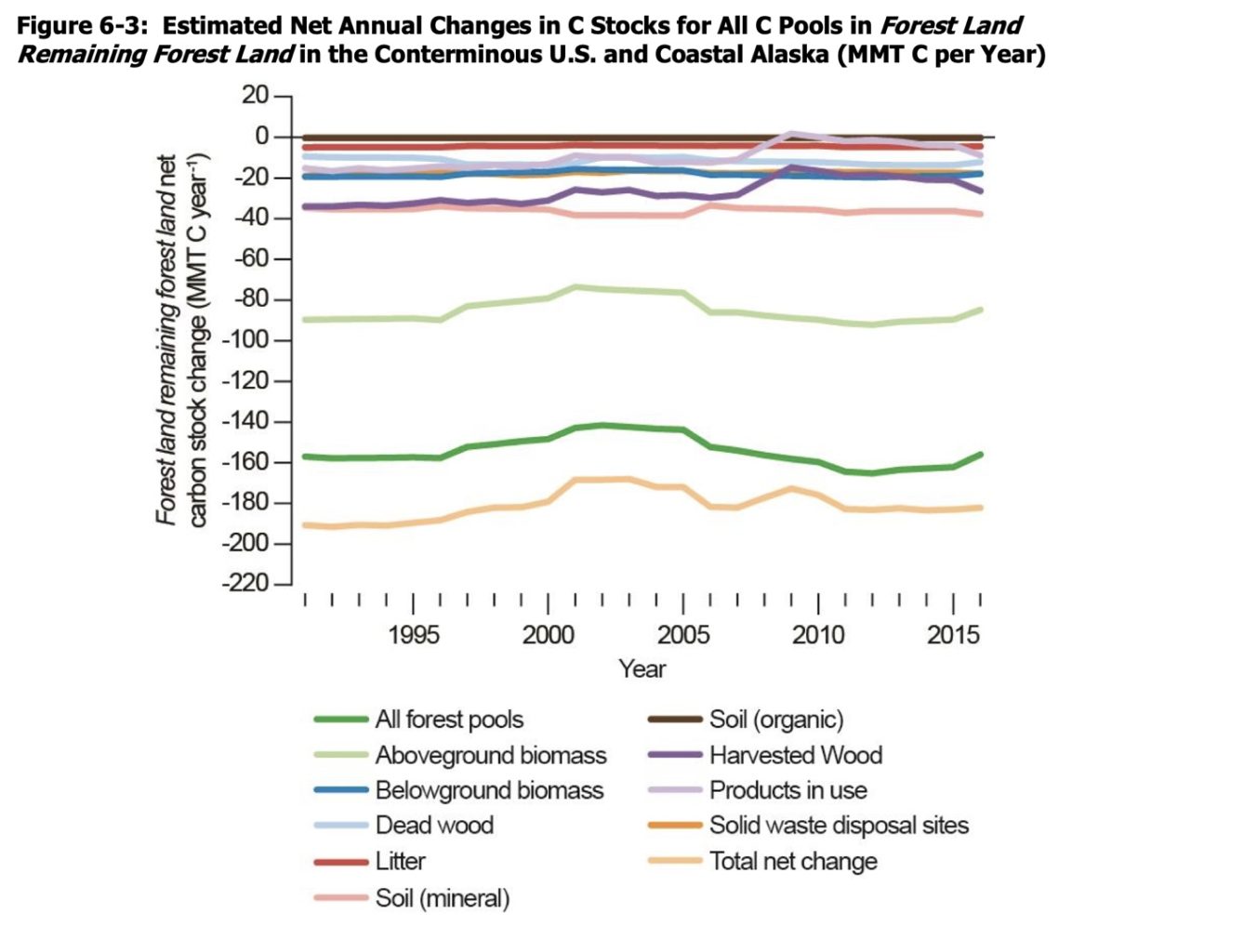It depends.

Forest is a CO2 sink, as shown in the above graphic for forests in the continental USA and costal Alaska (Source lost, similar to EPA):
The category “All Forest Pools” shows the effects within the forest itself. The biggest contributor to the total is above ground biomass, and almost all of this is composed of tree growth. The forest area of the United States has increased by about 5% since 1980, because of regrowth from previous crop land,. This accounts for most of the tree growth, since eventually trees stop growing. Once they do it is organic and mineral sequestration of carbon in the soil that is the principal and permanent carbon sink.
In snow country, the replacement of northern forests by savanna or fields almost always has a cooling effect, because evergreen forests reflect only 5% to 10% of the sun’s radiation while winter snow exposed by deforestation initially reflects over 80% of it. This albedo effect overwhelms the effect of the carbon released. In non-snow country, cultivated land reflects roughly 11%-23% of the sun, while coniferous forests reflect 9% to 15% of it.1 So perhaps the net effect of forest destruction is neutral. (Rarely, bare land can be darker than a forest; for example, when the mangrove forests of the Florida Everglades gave way to black dirt.)2. In this case the cutting of the forest increases CO2 and reduces albedo.
However, the climate effects discussed above are not the full story. In the last few years scientists have become aware that trees emit larger amounts of methane than was thought. This is particularly true of mangroves and other types of trees growing in wetlands.3 But some trees also absorb methane due to the bacteria in their bark.4
If forests are destroyed but replanted there is little or no effect on albedo; so until the forest has regrown the destruction warms the planet.
The smoke from massive forest fires does not on balance reduce warming by blocking the sun, as you will read in uninformed sources. It increases it because the dark carbon particles in it absorb solar radiation that might be reflected and thus heat the atmosphere. The degree of this warming is in dispute and subject to complex studies and simulations.5 6
Worldwide, what has been the effect of cutting down forests for agriculture on climate? Perhaps a small cooling effect, but perhaps not. History provides another way to look at this. Before the Middle-Ages the world was relatively warm yet had much more forest cover. Since the end of the black death and religious wars, forests have been felled everywhere; and none-the-less, until recent industrial times, global temperatures did not significantly increase or decrease.
- https://en.wikipedia.org/wiki/Albedo ↩︎
- https://today.oregonstate.edu/archives/2011/oct/“albedo-effect”-forest-disturbances-can-cause-added-warming-bonus-cooling ↩︎
- https://e360.yale.edu/features/scientists-probe-the-surprising-role-of-trees-in-methane-emissions ↩︎
- https://www.nature.com/articles/s42003-021-02264-1 ↩︎
- https://theconversation.com/wildfire-smoke-may-warm-the-earth-for-longer-than-we-thought-191643 ↩︎
- https://www.nature.com/articles/s41467-020-20482-9 ↩︎